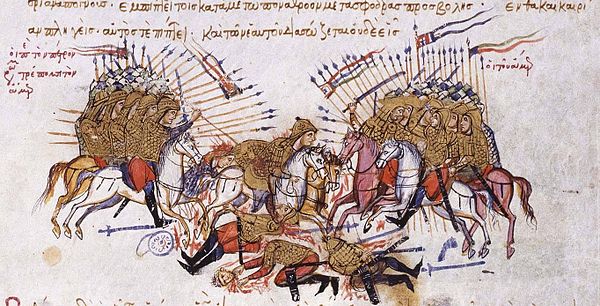
Byzantine Empire: Amorian dynasty
The Byzantine Empire was ruled by the Amorian or Phrygian dynasty from 820 to 867. The Amorian dynasty continued the policy of restored iconoclasm (the "Second Iconoclasm") started by the previous non-dynastic emperor Leo V in 813, until its abolition by Empress Theodora with the help of Patriarch Methodios in 842. The continued iconoclasm further worsened relations between the East and the West, which were already bad following the papal coronations of a rival line of "Roman Emperors" beginning with Charlemagne in 800. Relations worsened even further during the so-called Photian Schism, when Pope Nicholas I challenged Photios' elevation to the patriarchate. However, the era also saw a revival in intellectual activity which was marked by the end of iconoclasm under Michael III, which contributed to the upcoming Macedonian Renaissance.
During the Second Iconoclasm, the Empire began to see systems resembling feudalism being put in place, with large and local landholders becoming increasingly prominent, receiving lands in return for military service to the central government. Similar systems had been in place in the Roman Empire ever since the reign of Severus Alexander during the third century, when Roman soldiers and their heirs were granted lands on the condition of service to the Emperor.
































